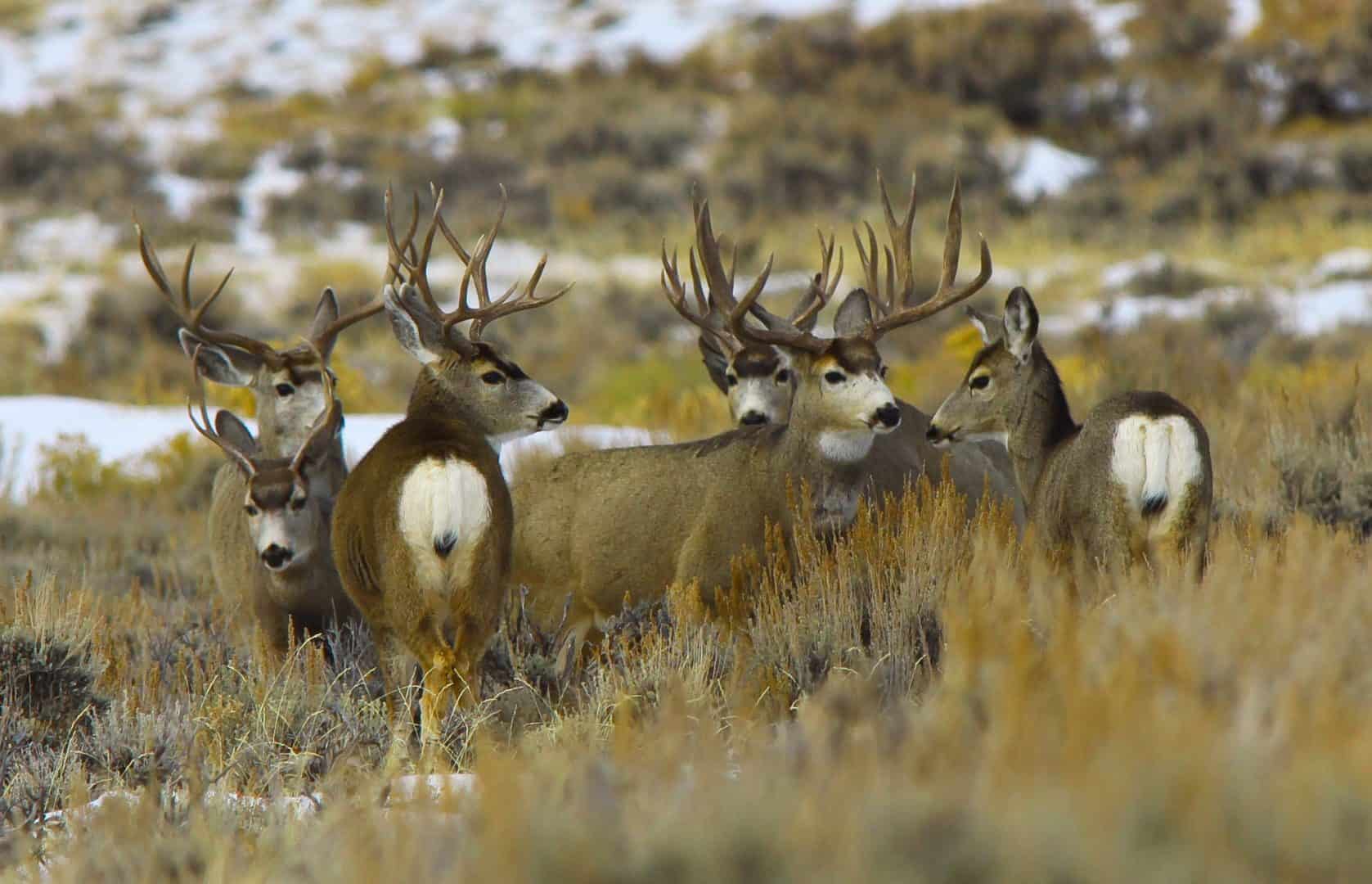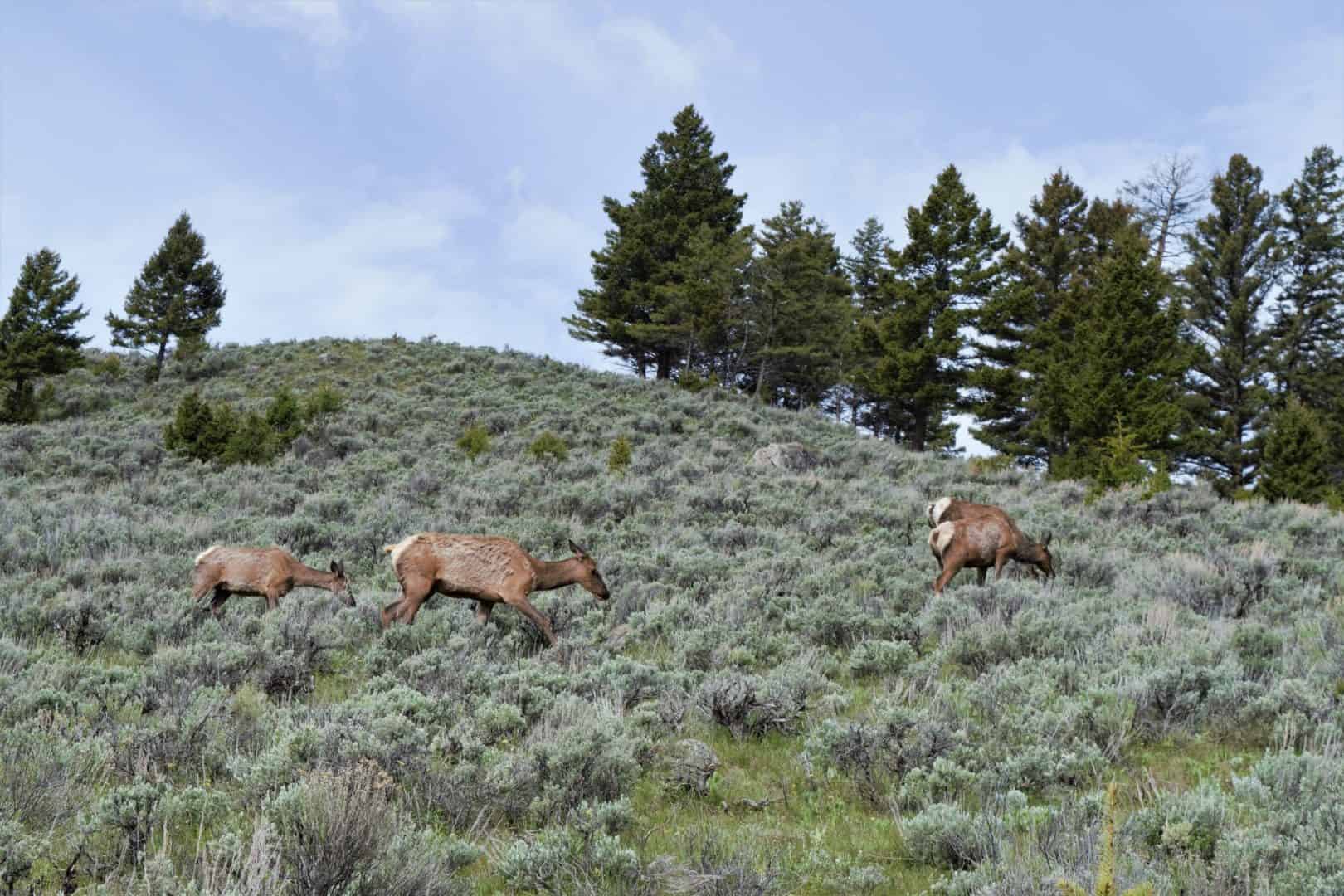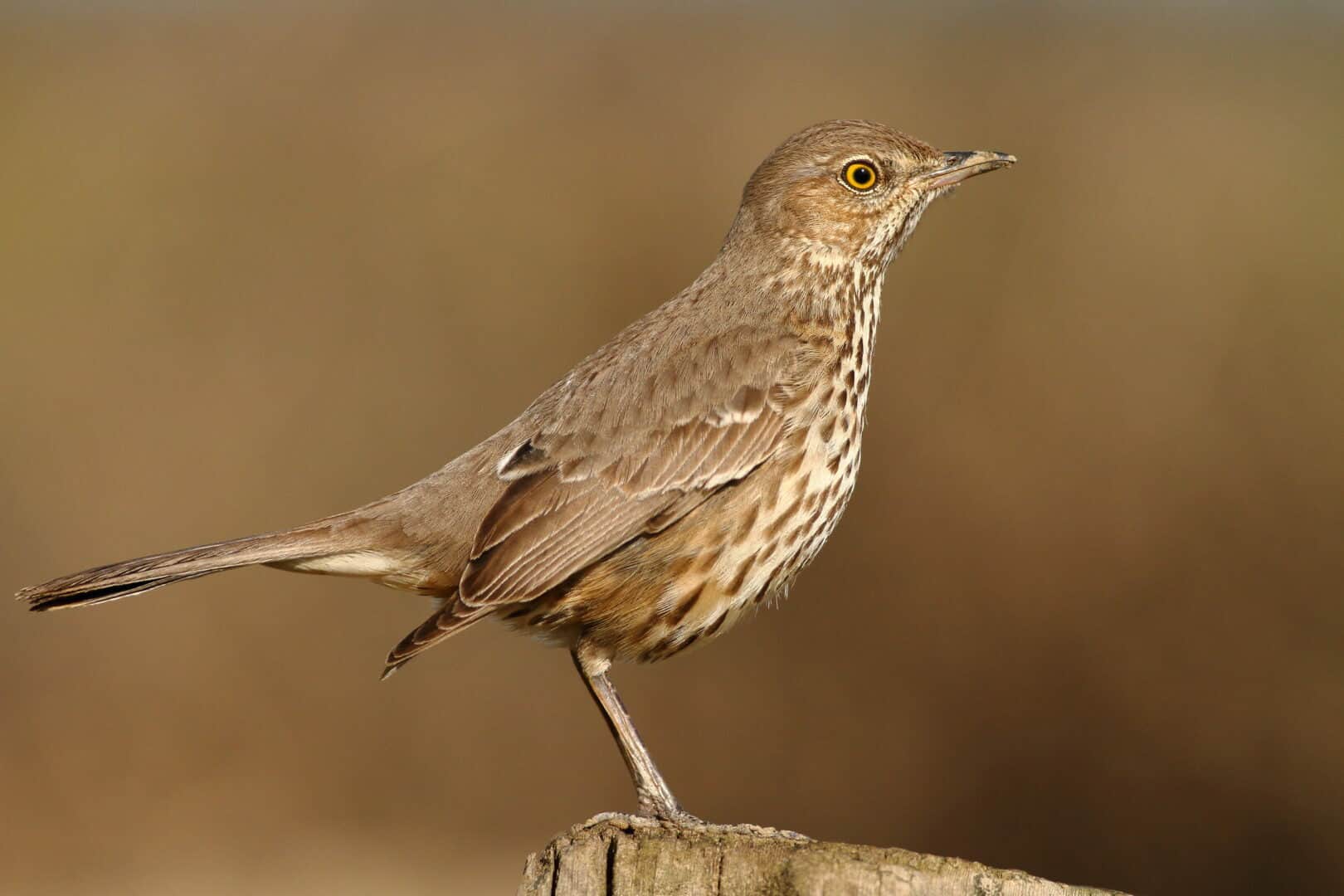
Photo: Tom Koerner, USFWS
More Sagebrush Wildlife
350 species of conservation concern benefit when we conserve wide, open sagebrush habitat. Meet more critters that share the range with sage grouse.
Fast, sleek and powerfully muscled, the pronghorn (also called antelope) relies on intact corridors. These mammals migrate as much as 150 miles between winter and summer range. To survive harsh winters, they nibble sagebrush leaves poking up from the snow. Pronghorn can reach speeds of up to 60 mph as they race across wide-open sagebrush and grasslands. Found only in North America, the pronghorn is the second-fastest land animal in the world – only the cheetah can sprint faster.
Mule deer also eat sagebrush in the winter. That’s why you’ll often see them sharing space with sage grouse out on the range. They come down from mountains in fall to converge in lower elevation valleys. Then in the spring, they head back up into the mountains as grasses and flowers green up at higher elevations.
In Wyoming, conservation efforts have protected vital pathways where mule deer and sage grouse habitat overlap.
Did you know that elk and sage grouse share 40 million acres of sagebrush habitat? Sagebrush country serves as both winter range and spring calving grounds for elk. These ungulates migrate as far as 90 miles twice each year.
When grasses dry out in late summer, elk find protein in the buds of sagebrush. In the harshest part of winter, sagebrush poking through the snow becomes a life-saver food source. Plus, sagebrush's dark branches warm in the sun, melting the snow below to expose grasses. The branches also create air pockets in the snow, too, making it easier for elk to paw through drifts to find food.
The Brewer’s Sparrow used to be one of the most abundant birds in the Intermountain West. Today, it’s declining because—like the sage grouse—it requires healthy sagebrush habitat. Removing encroaching conifers is helping sagebrush songbirds recover.
The Brewer’s sparrow builds its nest low down in a large sagebrush where it's well concealed. With one of the most musical and complex songs in the bird world, the Brewer’s sparrow is akin to an opera singer.
The tiniest rabbit in North America, the pygmy rabbit’s diet is 99% sagebrush. It weighs just one pound and could fit in the palm of your hand. This elusive animal lives where there are deep, diggable soils and dense sagebrush. The pygmy rabbit is the only kind of rabbit to dig its own burrow.
The pygmy rabbit is endangered in the state of Washington, and people are working to reintroduce these tiny animals and restore their habitats.
This strong-legged runner chases after insects in the summer, foraging on the ground. The sage thrasher builds its cup nest in the sagebrush, sometimes topping the nest with a canopy. A little smaller than an American robin, the sage thrasher has long legs, a long tail, and yellow eyes.
A courting male impresses a female with its zigzag flight over the sagebrush, then lands on a bush with his wings held high.
This small grayish bird runs between big sagebrush and low bunchgrasses with its tail raised. The sage sparrow weaves a cup nest of twigs and grasses within a sagebrush shrub. It feeds on insects like grasshoppers, crickets, caterpillars, ants, and lacewings. Seeds are a favorite too.
After nesting season, the birds gather in loose flocks and move south. Males return to the same sagebrush breeding grounds every year.







